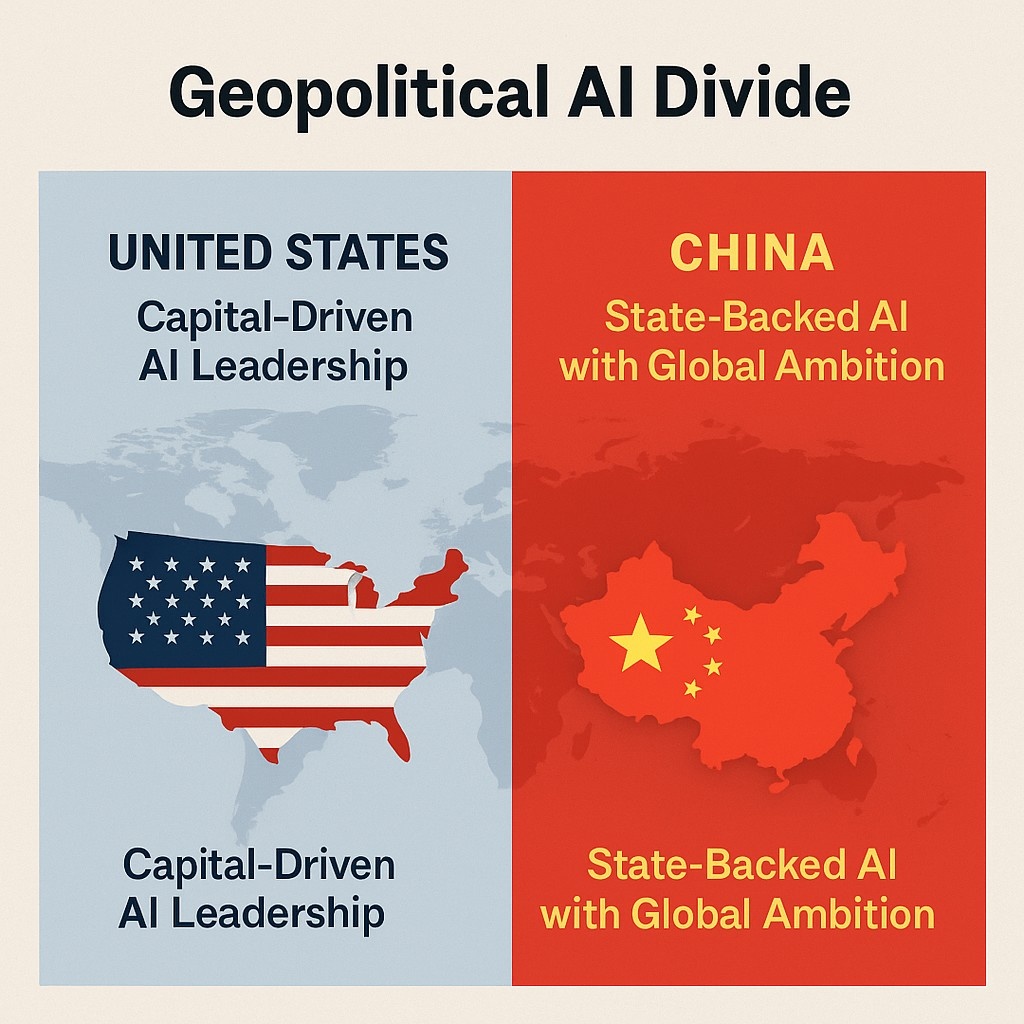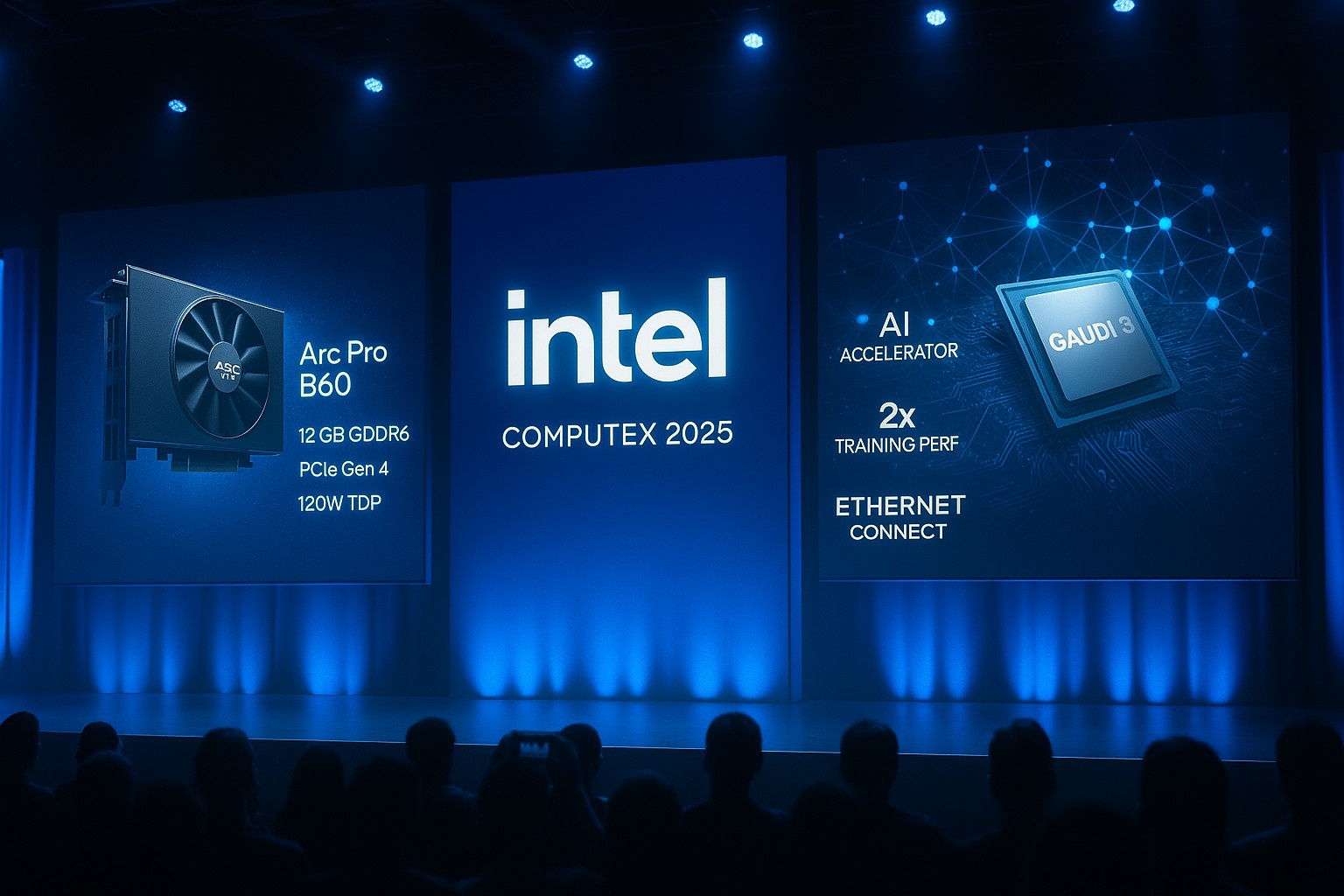Geopolitical AI Divide: How the US and China Are Building Two Rival AI Empires
As artificial intelligence (AI) becomes central to global power structures, the world’s two largest economies—the United States and China—have unveiled starkly different national strategies for AI development, infrastructure, and global influence. Their opposing approaches signal a deepening divide that is shaping not just technology but the future of geopolitics, commerce, and international governance.
This growing bifurcation is no longer theoretical. It is materializing in policy declarations, hardware announcements, and diplomatic posturing that may define how AI is built, accessed, and regulated worldwide.
United States: Capital-Driven AI Leadership
In Washington, the White House has introduced a comprehensive AI Action Plan that leaves little ambiguity about the country’s direction. The message is clear: maintaining American leadership in artificial intelligence is a strategic imperative, driven by both national security concerns and the ambition to preserve economic dominance.
Key pillars of the US strategy:
- Emphasis on deregulation: The federal government is focused on creating a pro-business environment that allows AI companies to innovate rapidly and scale operations without excessive bureaucratic oversight.
- Private sector empowerment: Leading firms like Google, OpenAI, Microsoft, Nvidia, and Amazon are positioned as the primary vehicles for technological progress, backed by incentives such as tax benefits and federal grants.
- Domestic infrastructure buildup: The strategy calls for massive investments in data centers, AI compute capacity, and onshore semiconductor manufacturing, all aimed at reducing dependence on foreign supply chains, particularly those linked to China.
- National security alignment: AI development is closely integrated with defense planning, cybersecurity initiatives, and federal research priorities, making it part of America’s strategic assets.
The US approach is fundamentally capitalist and protectionist, focused on securing domestic dominance and enabling its tech giants to remain ahead of global competitors.
China: State-Backed AI with Global Ambition
In contrast, China presented a dramatically different vision at the World Artificial Intelligence Conference (WAIC) in Shanghai. There, Premier Li Qiang proposed the creation of an international AI cooperation organization—a move that positions Beijing not just as a technological competitor, but as a global leader in AI governance.
Core components of China’s AI strategy:
- Globalist rhetoric: Beijing is actively promoting a vision of AI as a shared human asset, warning against AI becoming an "exclusive tool" dominated by a handful of nations.
- Diplomatic outreach to the Global South: China is positioning itself as a technological partner to developing nations, offering to share AI capabilities and research as part of broader geopolitical alliances.
- State-led industrial policy: Chinese AI development is heavily orchestrated through centralized planning, with major roles played by national tech champions like Huawei, Baidu, and SenseTime, backed by public funding and state strategy.
- Technological sovereignty: A major goal of China’s AI plan is to achieve independence from US-controlled hardware, particularly in semiconductors and cloud computing.
Rather than emphasizing free-market competition, China is using a soft power strategy, aligning technological growth with foreign policy and global consensus-building.
Huawei Unveils China’s AI Supernode
One of the most significant developments reinforcing China’s strategy came at the same WAIC conference, where Huawei introduced the CloudMatrix 384 AI computing platform. This system is a high-performance AI supercomputer designed to overcome the limitations imposed by US technology sanctions.
Key features of the CloudMatrix 384:
- Built using 384 domestically developed Ascend 910C chips, avoiding reliance on US-made components.
- Features a high-speed interconnect architecture that enables massive parallel processing, compensating for lower per-chip performance compared to Nvidia’s A100 or H100 GPUs.
- Optimized for large-scale training of foundation models, such as generative AI systems and computer vision tasks.
Industry analysts suggest this architecture allows Huawei’s system to match or even surpass Nvidia’s supercomputing capabilities on certain metrics, particularly when deployed at scale. The platform exemplifies China’s strategy of building self-sufficient AI infrastructure while demonstrating its ability to innovate around technological restrictions.
A Fracturing Global AI Landscape
The competing approaches of the US and China are creating a global schism in AI development, with countries, companies, and researchers increasingly pressured to align with one of two emerging ecosystems.
| Aspect | United States | China |
|---|---|---|
| Development Model | Market-driven, private-sector led | State-directed, policy-driven |
| Strategy Focus | National dominance, security, economic growth | International cooperation, technological sovereignty |
| Infrastructure Priority | Onshore chip fabs, hyperscale data centers | Domestic chip scaling, global tech outreach |
| Governance Stance | Deregulation and competition | Multilateral regulation and global standards |
| Global Engagement | Limited to strategic allies | Outreach to developing nations, Global South |
This split is creating two parallel AI worlds—each with its own hardware stacks, regulatory frameworks, training datasets, and philosophical underpinnings. The long-term implications may affect everything from technical interoperability to data privacy norms and AI safety standards.
Strategic Implications for the World
As the divide deepens, nations outside the US-China axis—such as India, Brazil, South Africa, Indonesia, and members of the European Union—are finding themselves at a crossroads. These mid-tier powers will need to make choices about:
- Infrastructure alignment: Whether to build AI systems compatible with US cloud tools or China’s emerging alternatives.
- Policy frameworks: Whether to support American-style deregulation or Beijing’s proposal for collective global AI governance.
- Market access and vendor relationships: Whether to use US chips, software, and APIs—or accept Chinese infrastructure bundled with diplomatic agreements.
Some countries may attempt to chart a third path through open-source AI models, non-aligned tech coalitions, or regional standards initiatives, but the gravitational pull of the two superpowers will make neutrality difficult.
Conclusion: The Era of Geopolitical AI Has Begun
Artificial intelligence is no longer just about data and algorithms. It is now a geopolitical instrument, shaping alliances, economic dependencies, and global influence.
While the United States is betting on capitalist innovation and domestic consolidation, China is leveraging diplomacy and state-led strategy to build a parallel system with global reach. Both paths reflect deep national ideologies—and both are reshaping the future of AI as a tool of power. The coming years will determine not just who leads in AI, but whose values shape the digital world we all inhabit.
















